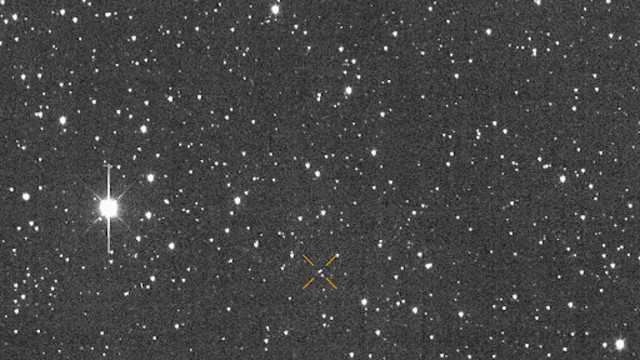
A photo taken by the University of Hawaii's asteroid alert system on December 27 shows asteroid 2024 YR4. Scientists now confirm that the asteroid has almost no chance of hitting Earth in 2032. CNN
NASA and the European Space Agency (ESA) have confirmed that asteroid 2024 YR4, once considered the riskiest space rock, is no longer a threat. Initially, scientists feared a possible impact in 2032, but new calculations show nearly zero risk.
NASA now estimates only a 0.0017% chance of impact, while ESA places it at 0.002%. This means the asteroid has a 99.9983% chance of safely passing by Earth in December 2032. Scientists also calculated a small 1.7% chance of it hitting the moon, but even that is not a concern for Earth.
"When first discovered, asteroid 2024 YR4 had a small but notable chance of impacting our planet in 2032," NASA stated. However, as more data became available, experts at NASA’s Jet Propulsion Laboratory refined their calculations. They found no significant impact risk for at least the next century. Further observations have reduced the uncertainty of its path, and the asteroid is now expected to pass far from Earth on December 22, 2032.
Over the weekend, the asteroid’s threat level was downgraded to 0 on the Torino Impact Hazard Scale. This scale measures potential asteroid collisions with Earth. A score of 0 means there is no risk or the risk is so small that it can be ignored. This classification also applies to smaller objects that burn up in Earth’s atmosphere without causing damage.
A Quick Risk Assessment Turnaround
Astronomers first detected asteroid 2024 YR4 on December 27, 2024. Measuring between 131 and 295 feet (40 to 90 meters), it is roughly the size of a large building. If it were to collide with Earth, it could cause serious damage in a localized area.
The rapid reassessment of the asteroid’s threat level was possible thanks to continuous monitoring by astronomers worldwide. Richard Binzel, a planetary scientist and creator of the Torino Scale, praised their efforts.
"I’m pleasantly surprised that we could reduce the probability numbers so quickly," Binzel said. He explained that an asteroid either hits or misses, and any percentage in between represents uncertainty. "We didn’t want to sit in that uncertainty for months," he added.
From High Risk To No Concern
Last week, asteroid 2024 YR4 briefly held the record for the highest impact risk in two decades, surpassing the famous asteroid Apophis. At its peak, NASA estimated a 3.1% chance of impact, while ESA put it at 2.8%. These numbers were higher than the previous record held by Apophis, which once had a 2.7% impact probability.
However, astronomers always expected the risk to decrease as more data became available. Apophis, which is much larger at 1,148 feet (350 meters), was once considered highly dangerous. It briefly reached a level 4 on the Torino Scale but was later downgraded to 0, just like 2024 YR4. Apophis will still pass close to Earth in 2029, but scientists confirm it poses no danger.
How Astronomers Reduced The Risk
One of the biggest challenges astronomers face when assessing asteroid threats is uncertainty. In 2024 YR4’s case, they needed more data on its size and orbit.
Observations were taken using powerful telescopes worldwide, including those in Hawaii, Chile, Arizona, and the Canary Islands. These telescopes provided clearer images that helped astronomers track the asteroid’s path with greater accuracy.
David Tholen, an astronomer at the University of Hawaii, explained that Hawaii’s observatories produce exceptionally sharp images. "The atmosphere above Maunakea tends to be very stable, allowing for precise observations," he said.
The updated calculations came just in time. Astronomers were concerned because the asteroid’s trajectory would soon take it out of reach of telescopes until June 2028. However, ongoing observations will ensure it remains harmless. In March, the James Webb Space Telescope will examine 2024 YR4 to gather more details on its orbit and size.















